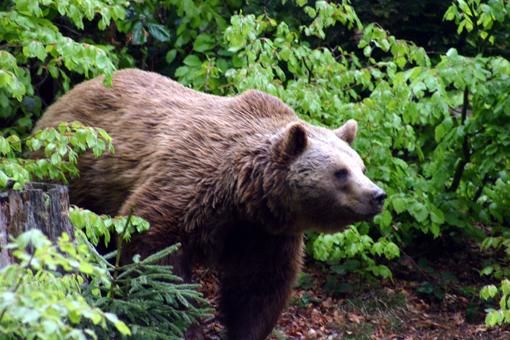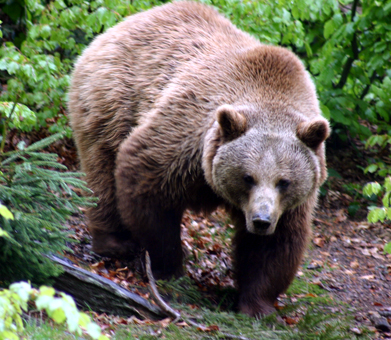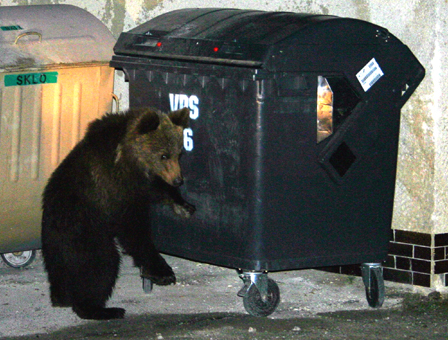

When there's danger

Encountering a bear does not necessarily mean that it will attack us. Only a small percentage of encounters lead to attacks. The most common situation is that the bear avoids us or remains hidden without us even knowing it was there. Although bears are cautious and most often flee from people, occasionally there are conflicts. In many cases, an appropriate response can greatly influence the outcome of encountering a bear (see if you meet a bear. Even better is to use preventive measures to avoid getting into critical situations.
The brown bear in Slovakia does not regard humans as prey: it is not trying to eat us. So why are some people injured by bears? In general, situations in which bears cause injuries to people can be divided into two categories. Almost all attacks on people are either defensive or by food-conditioned, so-called "container", bears. In the first case, a bear reacts in self-defence, because it feels threatened, for example if we have surprised, disturbed or provoked it. The second case can happen if a bear has got used to people and tries to get food from them.
A bear feels threatened and reacts defensively
A bear can attack if it feels threatened and reacts in self-defence. For example, if we get too close, if it is injured (e.g. wounded by shooting), we surprise it, if it defends its food or a female protects her young. An attack can also be provoked by a dog or by shouting.  An ability to recognise the various tracks and signs that they leave, as well as their most common foods and habits, can help you to avoid unexpected encounters with bears.
An ability to recognise the various tracks and signs that they leave, as well as their most common foods and habits, can help you to avoid unexpected encounters with bears.
It is possible to surprise a bear which has not noticed us, for example if it cannot catch our scent because the wind is not blowing towards it from us, the bear is resting hidden in dense vegetation or is focussed on feeding. The closer we are to a bear in the moment when it notices us, the greater the risk that it will react defensively. Most attacks begin when a person encounters a bear at a distance of less than 20m. If a bear is more than 100m away and is not moving towards you, the risk of attack is minimal.
A bear is used to people and is trying to get food
A bear attracted to food and used to the presence of people, a so-called habituated, food-conditioned or "container" bear, is a different situation. A bear's sense of smell is better than that of most dogs and leads him to food over great distances.  Sometimes bears search for food near human habitation. At first, they approach warily and under cover of darkness. If nothing bad happens to them and they obtain food easily, gradually they learn to overcome their wariness of people and return to the area.
Sometimes bears search for food near human habitation. At first, they approach warily and under cover of darkness. If nothing bad happens to them and they obtain food easily, gradually they learn to overcome their wariness of people and return to the area.
Such bears can look tame and cute at first sight. People often feed them and so encourage them in their nuisance behaviour, which can later become aggressive. People have been injured by bears which were used to getting food from people and lost their wariness. Such animals often have to be shot or trapped. The solution to such situations is to secure food and refuse so that bears cannot get to them and to never feed bears!



